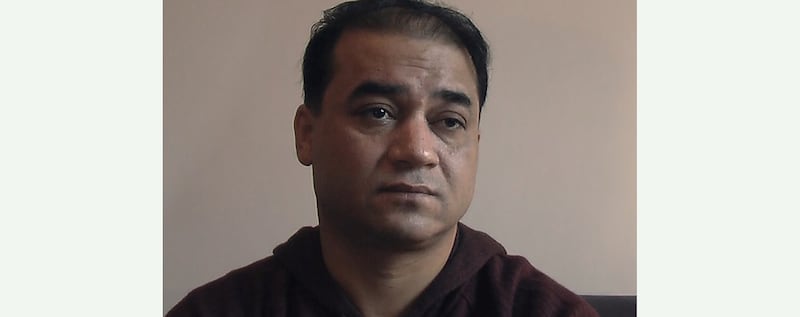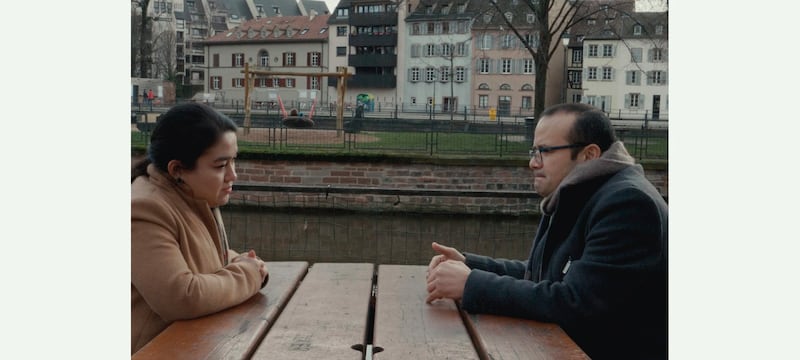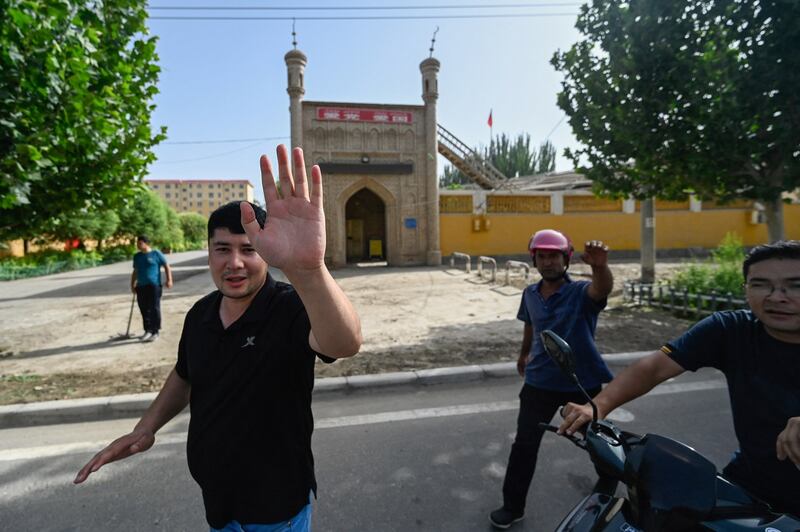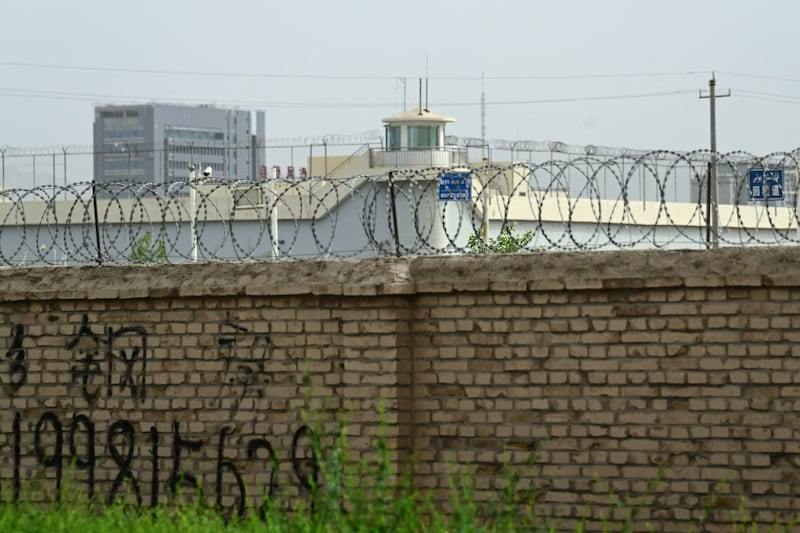To tell the story of the oppressed Uyghurs of northwestern China, the creators of “All Static & Noise” relied on the firsthand accounts of dozens of men and women who were imprisoned, tortured, raped and separated from loved ones under state-sponsored Chinese persecution.
The documentary, which premiered in Washington D.C. on Sunday as part of the Double Exposure Investigative Film Festival, also uses animation, satellite photos, news footage and furtive phone videos shot by tourists and academics to shed light on China’s network of internment camps in Xinjiang.
An estimated 1.8 million Uyghurs and Kazakhs have been imprisoned in these camps that form a key part of what the United States has branded a genocide.
An effort six years in the making, the film was built on 300 hours of interviews with exiled Uyghurs in Turkey, the United States, Norway, Kazakhstan and elsewhere who tell their painful, personal stories of suffering and loss.

“On a global level, I hope this will elevate the discussion of suffering under state power,” Director David Novack told reporters after the screening at the Martin Luther King Jr. Memorial Library. “And hopefully it gets to the discourse that we have to hold nations accountable for what they do, even inside their own borders, not just outside.”
At its heart, the film uses story-telling to put a human face on systemic cruelty imposed by the Chinese government. Since around 2017, Beijing has been intent on crushing what it calls terrorism and religious extremism among the Uyghurs – and along with it, an apparent attempt to wipe out their culture, language and Muslim religion.
The documentary's title comes from a Chinese Communist Party official's comment made to students at Xinjiang University in 2017: that all "static" and "noise" would be eliminated under Beijing's goal of winning the "People's War on Terror."
Although China denies allegations of genocide, throughout the film, the camera zooms into the faces of several Uyghurs who tell their painful stories about the impact that state-sponsored crackdown has had on their lives and culture.
Some were imprisoned and say they were tortured – forced to sit for hours in the notorious “tiger chair,” hung from the ceiling, shocked with electricity or raped – while interrogated about the whereabouts of their relatives. Others had their loved ones snatched away from them – with no idea of their fate.
Two exiles
The two main characters that emerge in this film are Jewher Ilham, the daughter of imprisoned Uyghur scholar Ilham Tohti, and Abduweli Ayup, who was put in prison and tortured for teaching children the Uyghur language.
Jewher Ilham, now 28 and living in the United States, said her advocacy began simply as someone attempting to contact her father, who was sentenced to life in prison in 2014. But that grew into a campaign to raise awareness about what every Uyghur family is facing, she said.
“It was inevitable. Many Uyghurs don’t want to be involved in politics at all,” she said after the screening.
“Most people just want to do the things that they’re passionate about. But now they’re forced to have a political opinion,” she said. “They’re forced to learn about politics. They’re forced to push for change, to become like lobbyists all the time. Why? Because we all want our families to be free.”

Tohti ran the Uyghur Online website, formerly at uyghurbiz.net, set up in 2006, which drew attention to the discrimination facing Uyghurs. The Chinese government closed the website several times prior to his arrest in January 2014.
The arrest took place at Beijing’s airport as he and Jewher were set to fly to the United States. Tohti was delayed and finally detained at passport control, and she hasn’t seen or spoken to him since then.
The film shows Jewher Ilham speaking to the European Parliament in 2019 about her father, who has been nominated for the Nobel Peace Prize since 2020. It also shows her watching a 2009 interview Tohti gave to Tibetan writer and activist Tsering Woeser, a scene that provides an emotional ending to the film.
‘A thousand images’
Abduweli, meanwhile, fled to Turkey after he was released from prison, and now lives in Norway, where he maintains a database of Uyghurs detained in Xinjiang and continues to teach the Uyghur language to young people.
“I’m not just teaching Uyghur,” he says in the film. “I’m creating their Uyghurness.”

The film shows Abduweli interviewing several Uyghurs living in exile in Turkey – where there is a sizable Uyghur community – and Norway, about the suffering they have endured and gnawing uncertainty about the fate of loved ones back home.
Novack acknowledged that the subjects on camera faced the risk of getting family members in Xinjiang in trouble, but felt the compelling need to speak out. Others wanted to speak but weren’t willing to take that risk and contributed by speaking off camera.
Several said that the simple act of fleeing Xinjiang had led to the detention of parents or siblings.
The close-up interviews are artfully interwoven with footage of several detention camps that was shot by a Chinese citizen journalist who tracked down locations using reporting from Buzzfeed.
One powerful drone video shows rows of blindfolded detainees being marched to a train station as uniformed officers prod them.
“Playing that out silently, for a long stretch – that covers a thousand images,” Novack said.
Another compelling scene comes from a computer generated animation that travels along rows of cells in a typical detention facility – the details of which were confirmed through interviews with former detainees.

Other animated images show prisoners with shackled feet and hands and with black bags over their heads. Novack said the hours of interviews the team conducted helped to produce these detailed images, which were described in similar fashion over and over.
“It wasn’t just one person’s story,” he said. “When we’re in the animated world, it’s multiple people’s stories.”
There was one instance when the film team scheduled interviews with exiles in Kazakhstan, and more than double the expected number of people showed up to speak about their time in detention. Even with the danger and risks involved, they wanted their voices to be heard, Novack said.
“It’s really important to remind people to not underestimate their own power and their words,” Jewher Ilham said after the showing.
“Oftentimes we victimize ourselves,” she said. “But you never know. Four and a half years ago when I was a student, I didn’t know this film would come out and be this powerful.”
